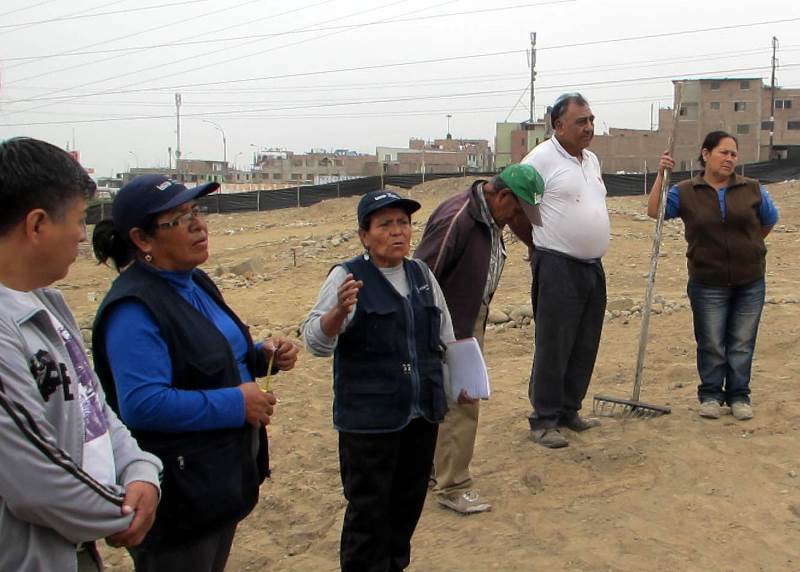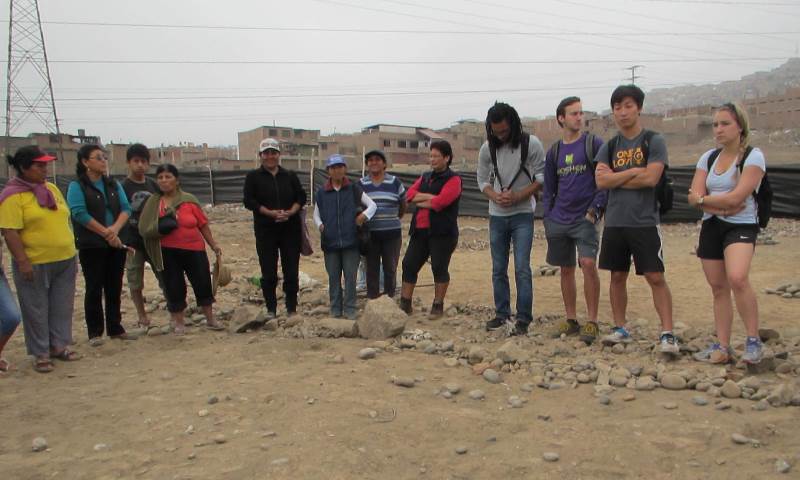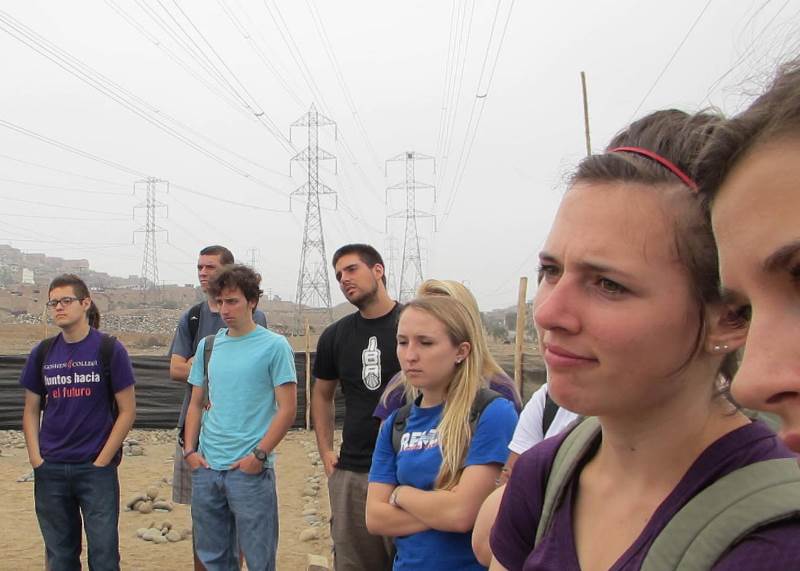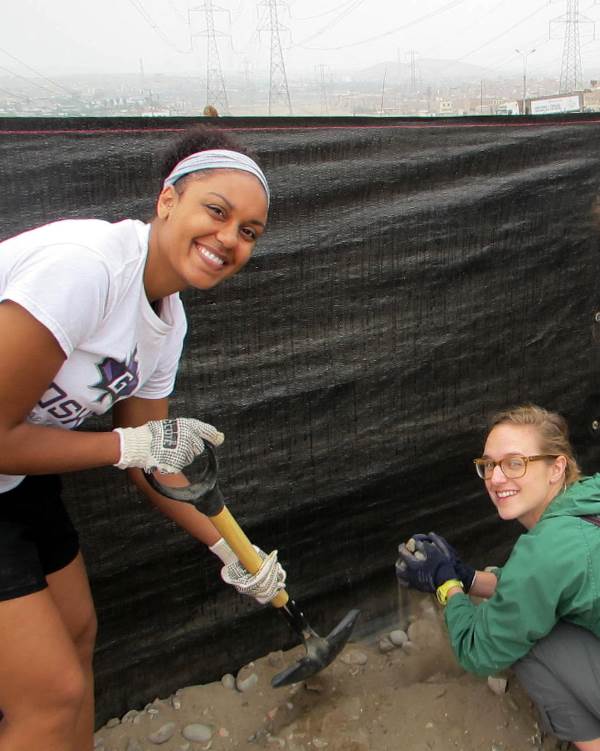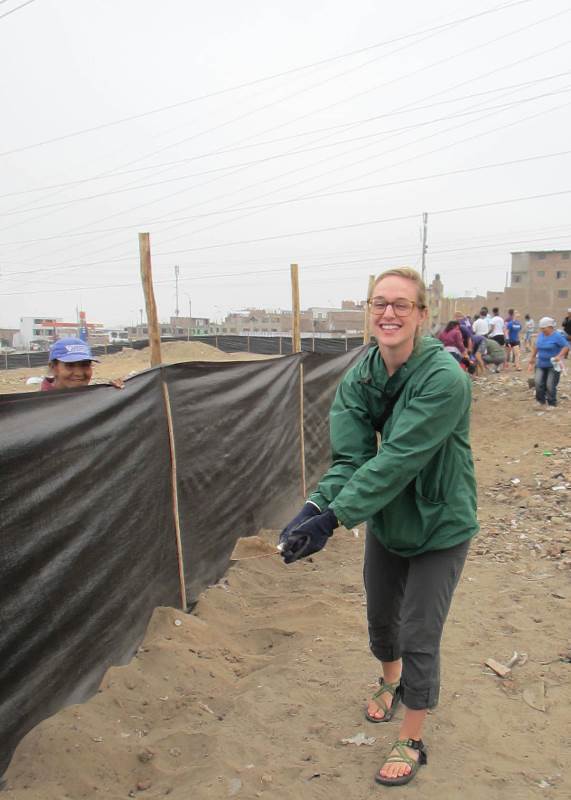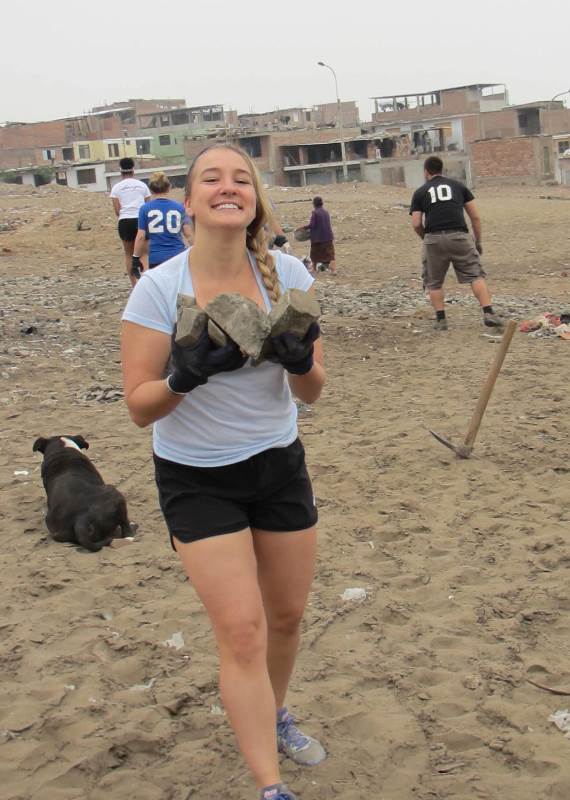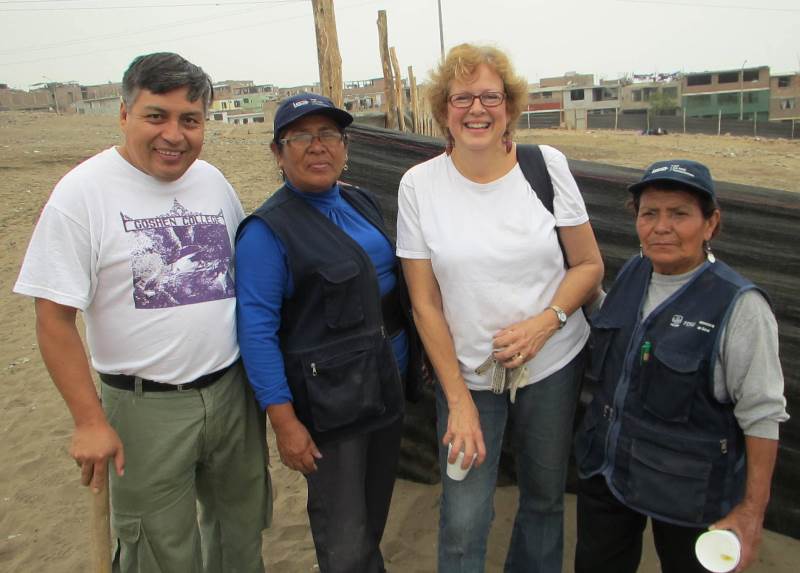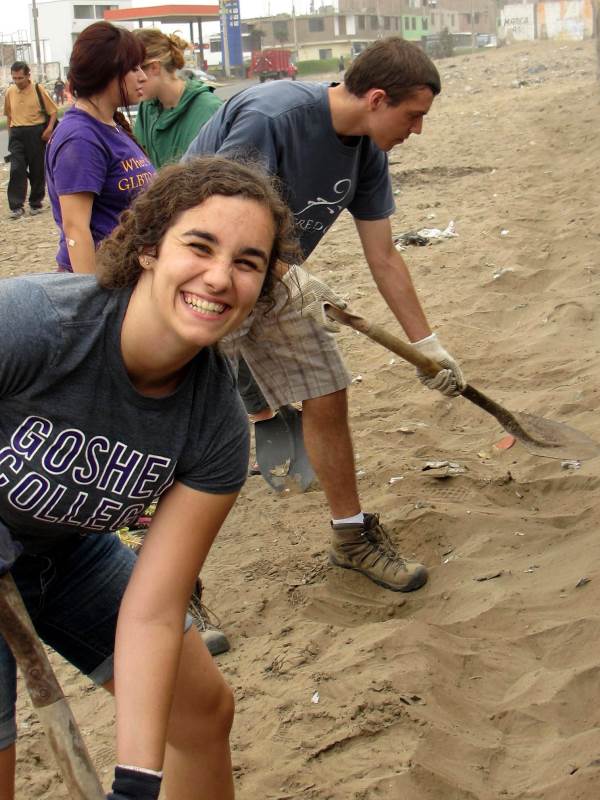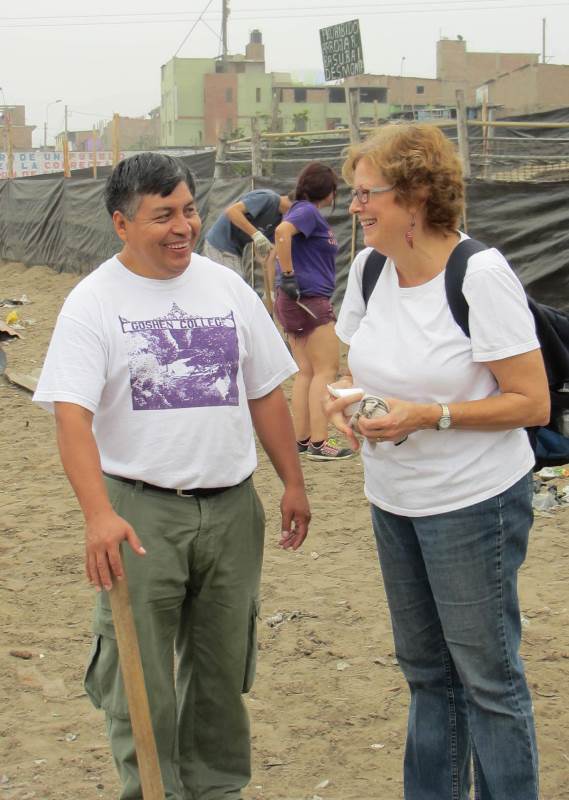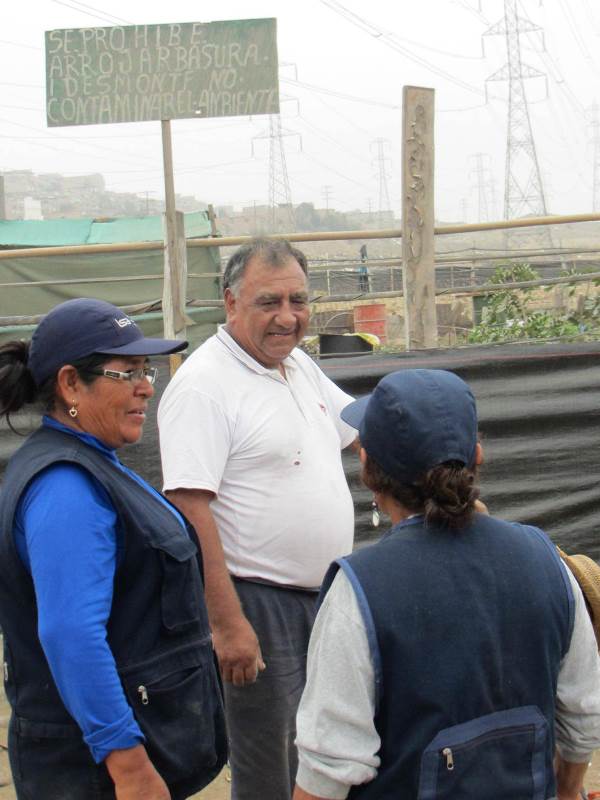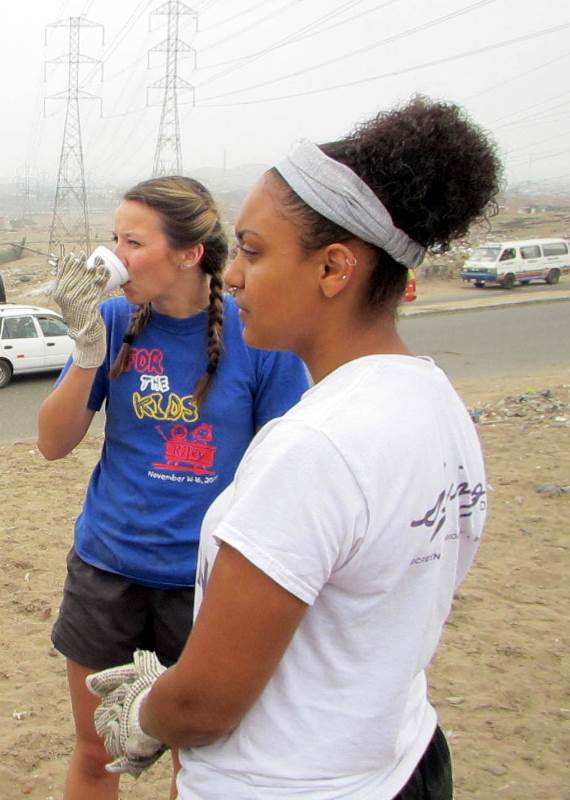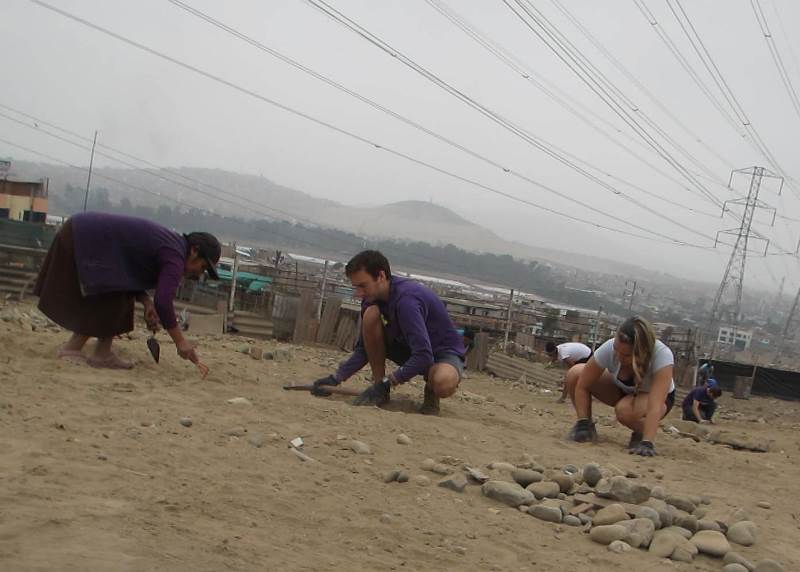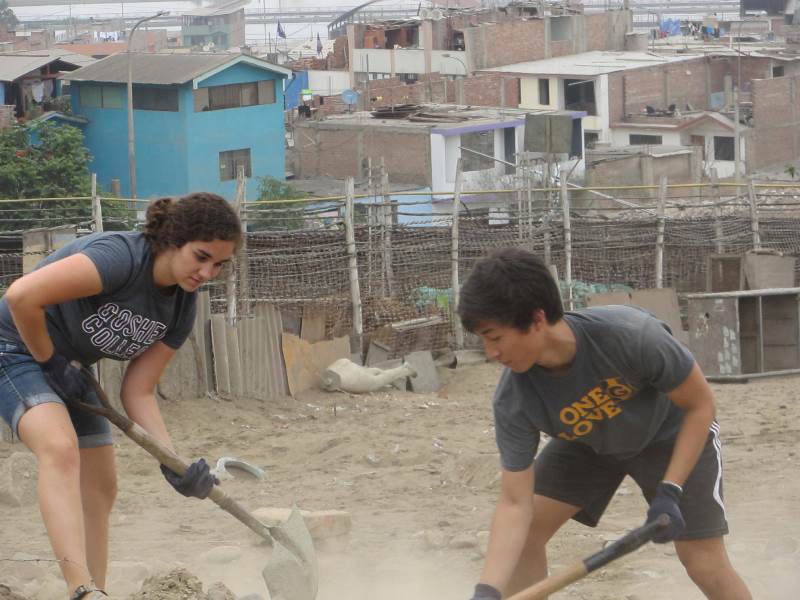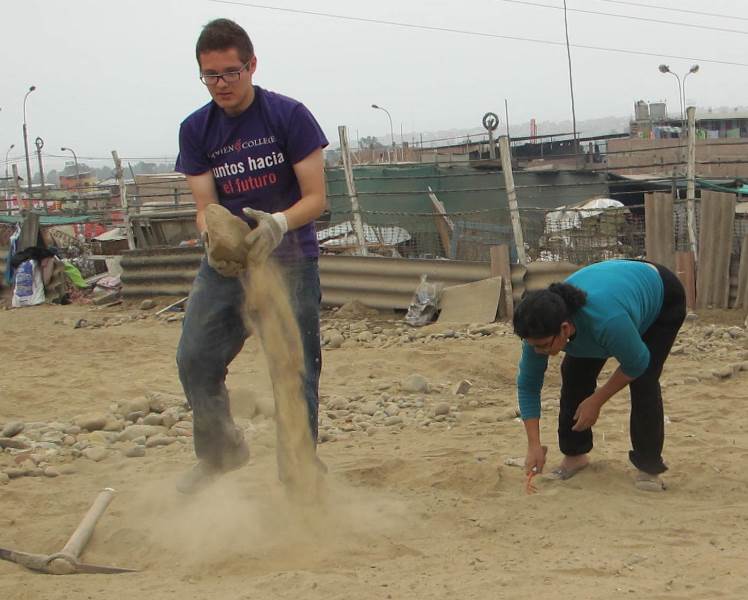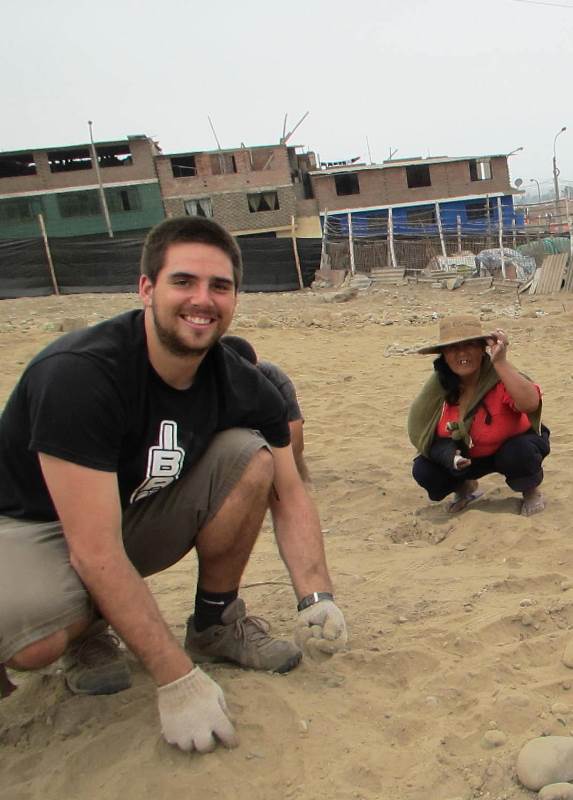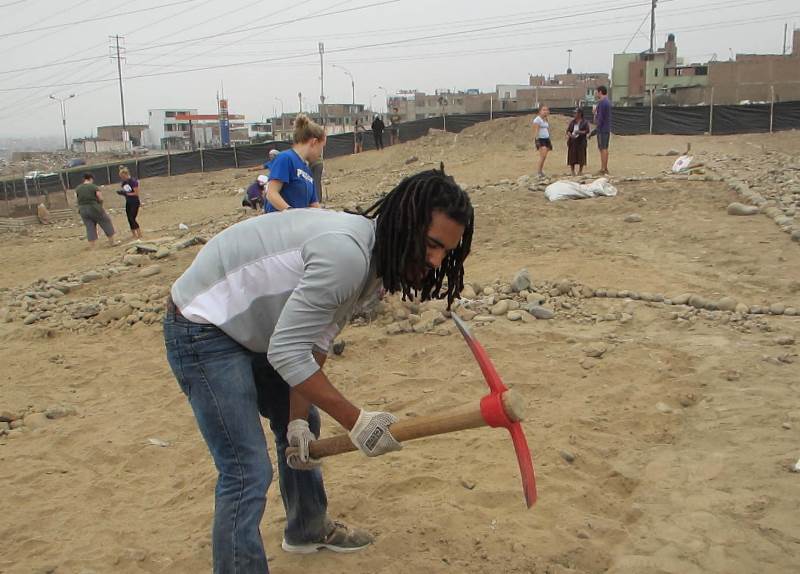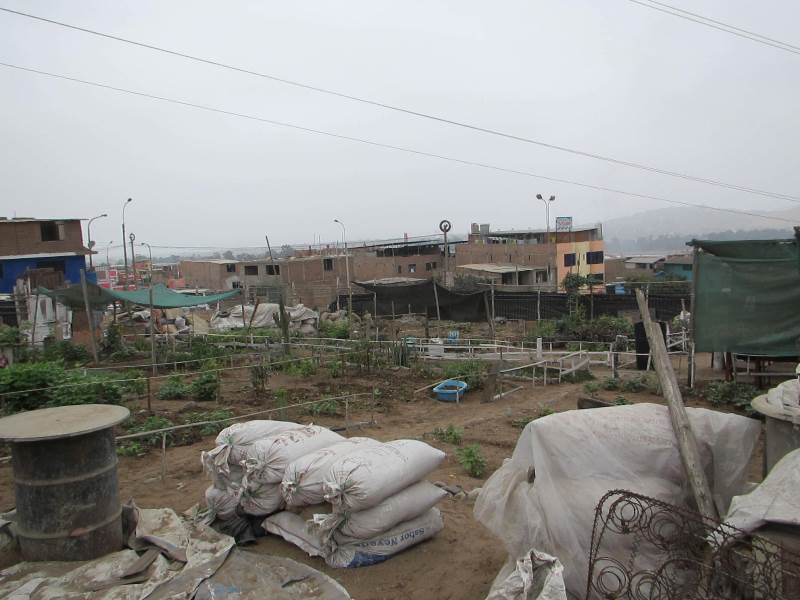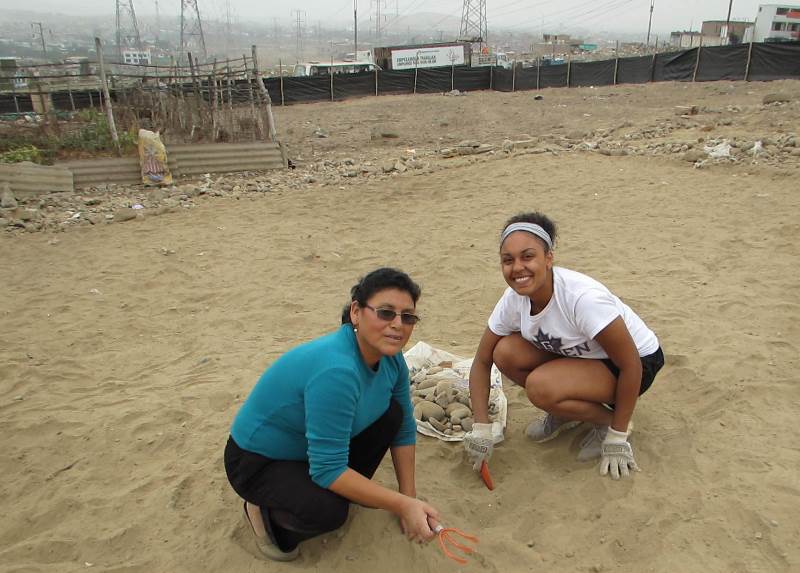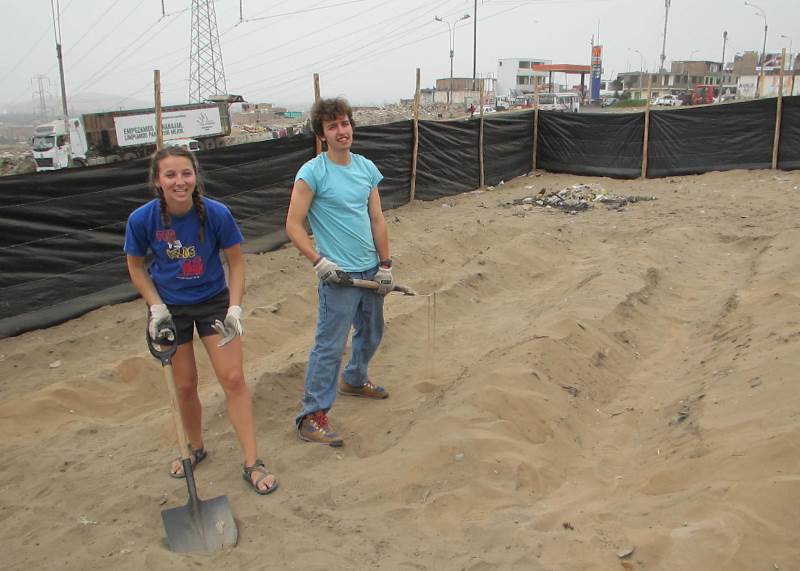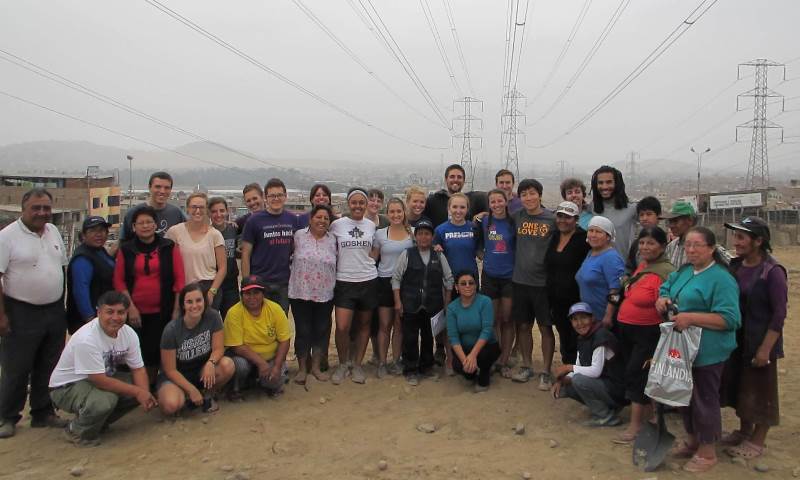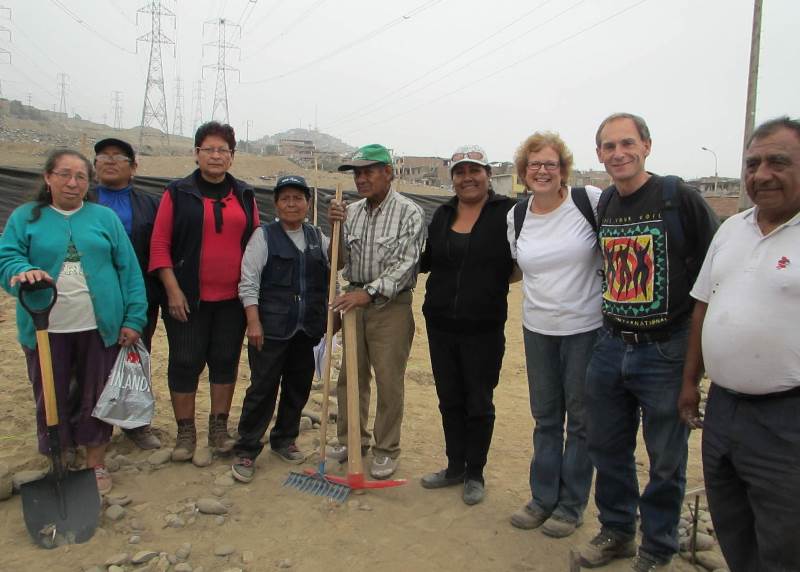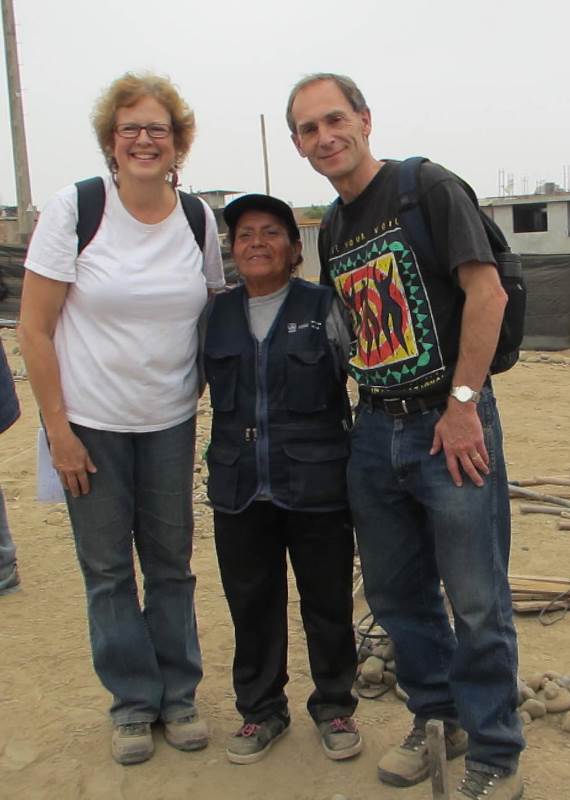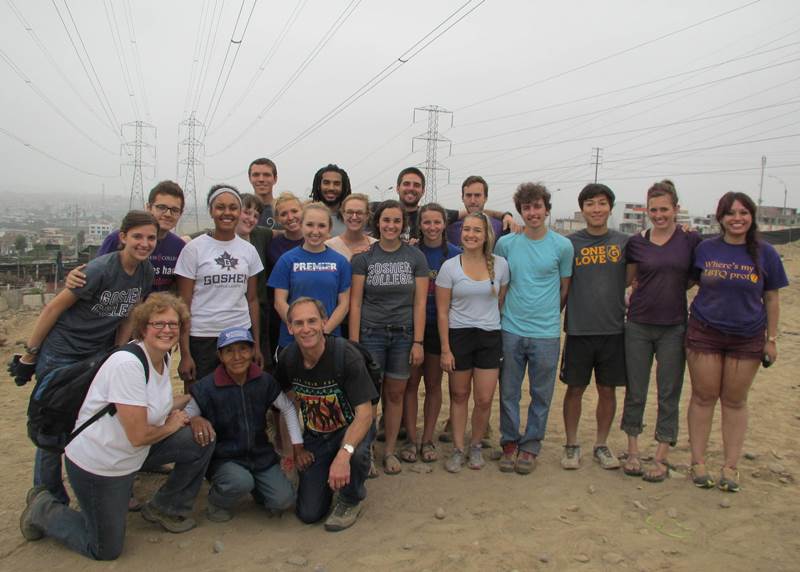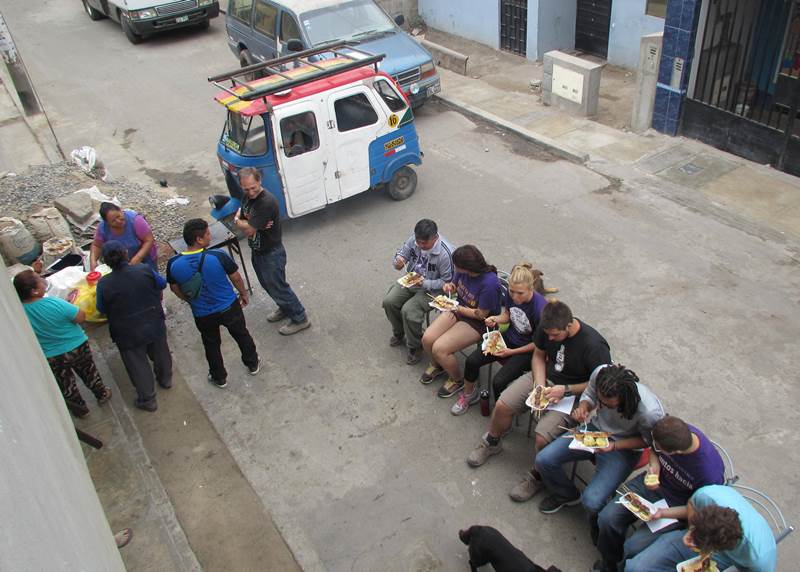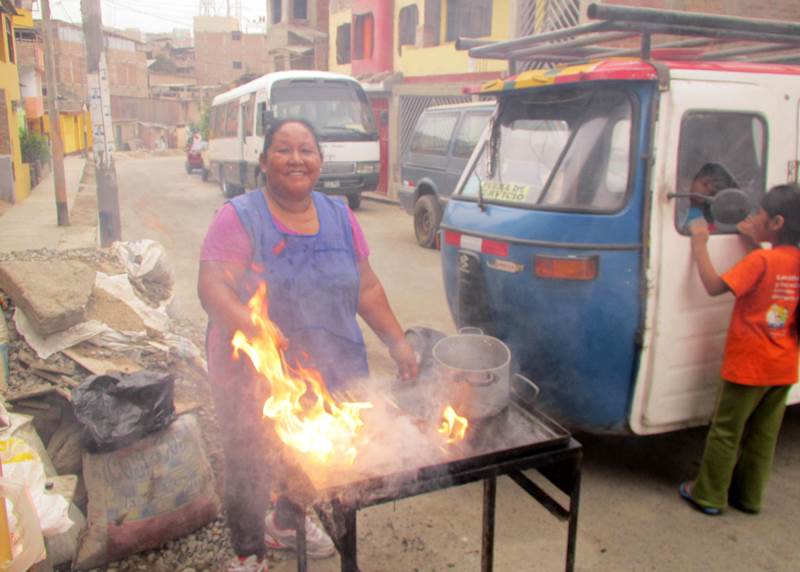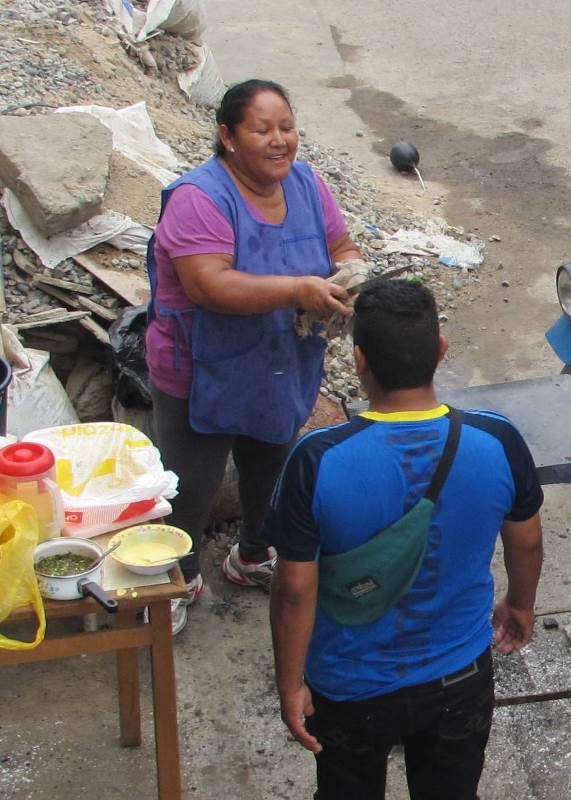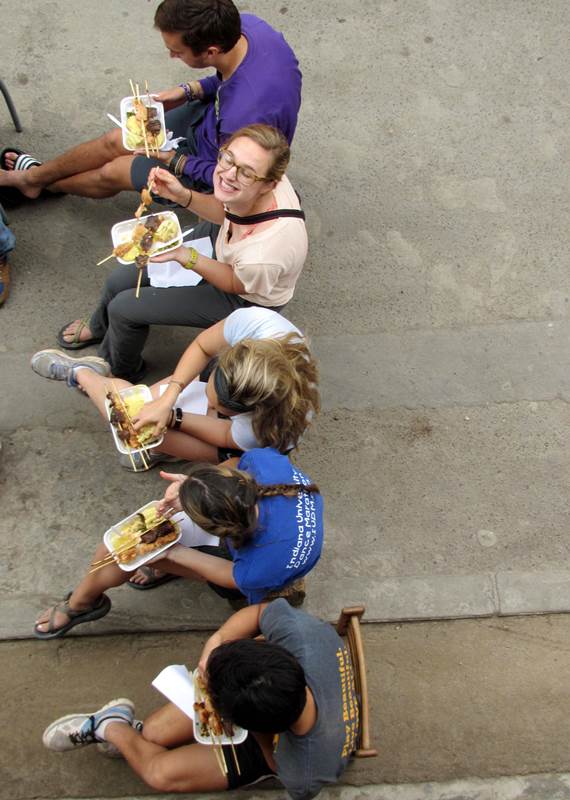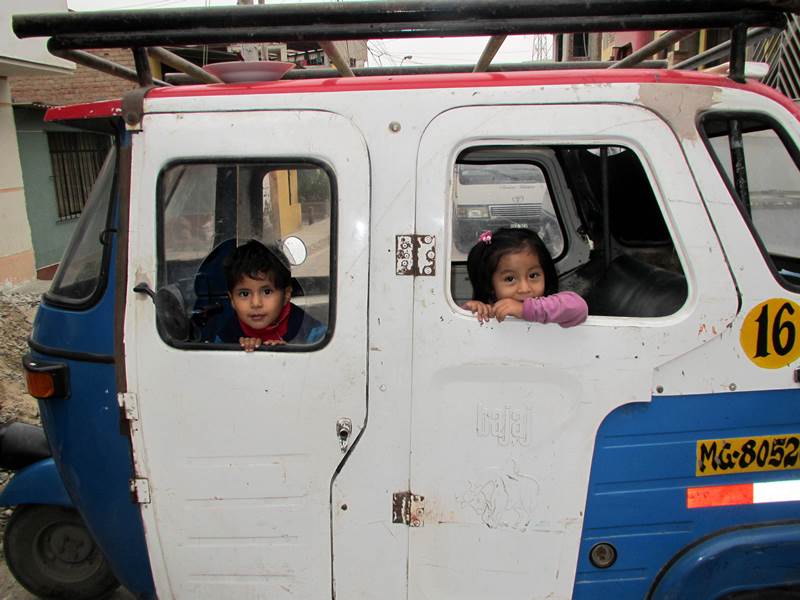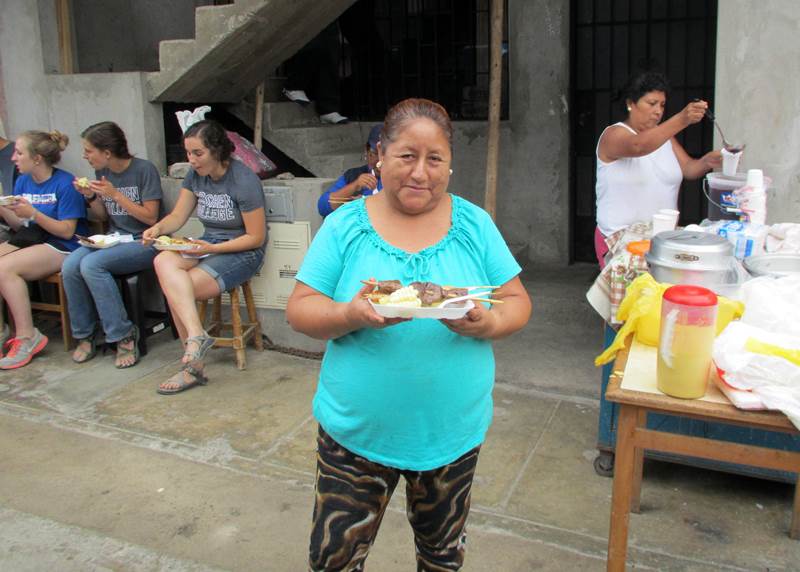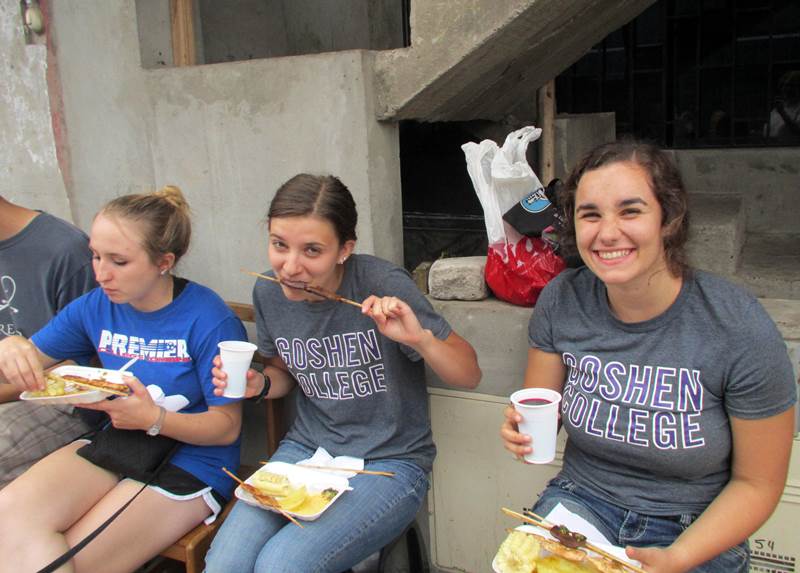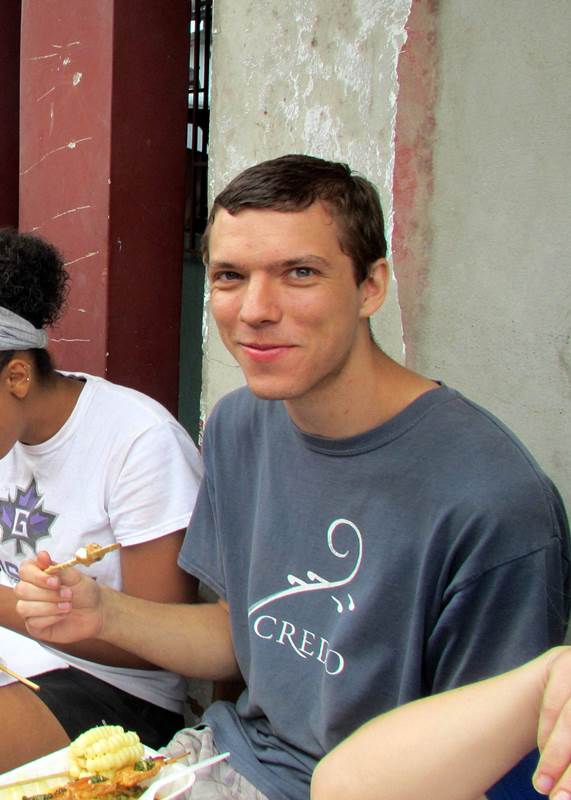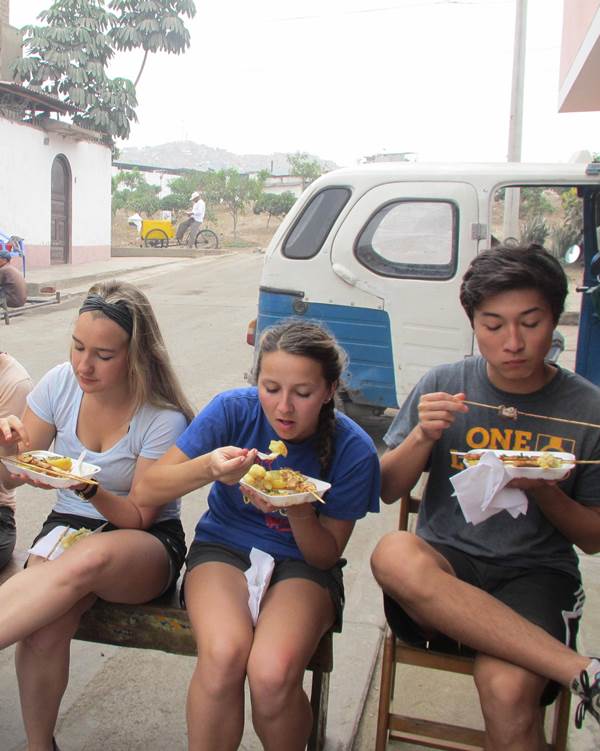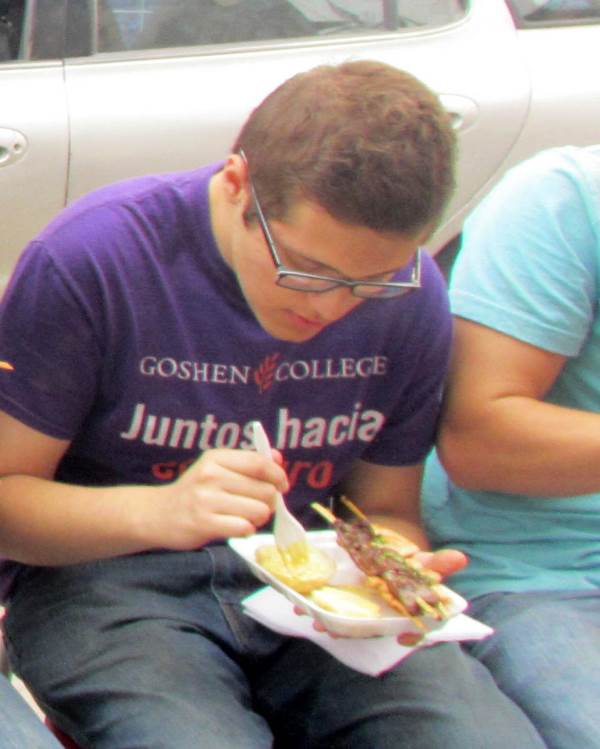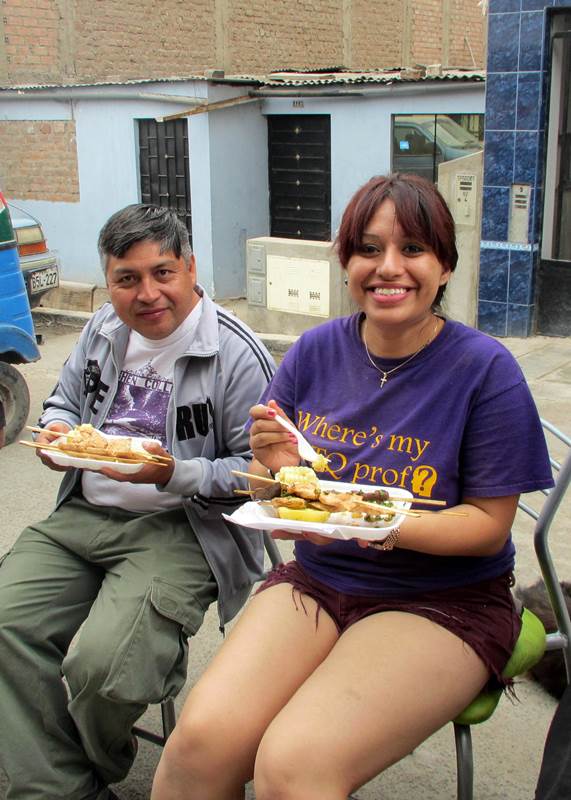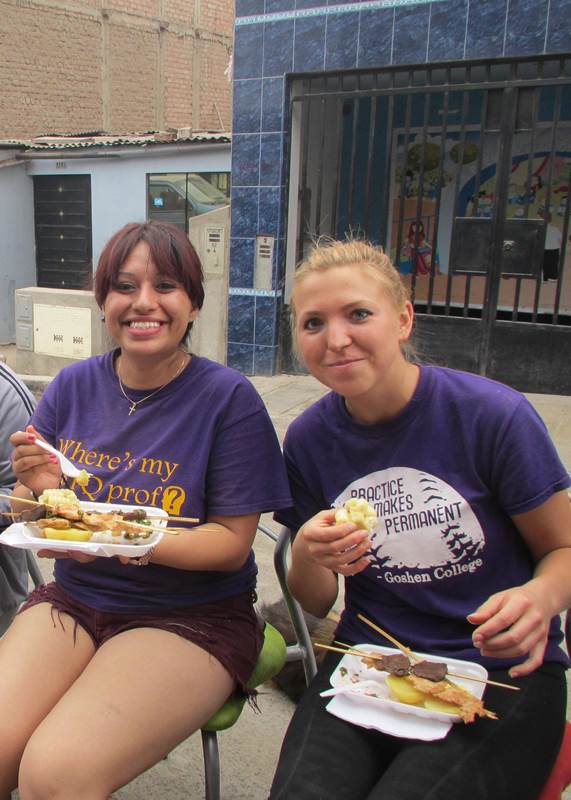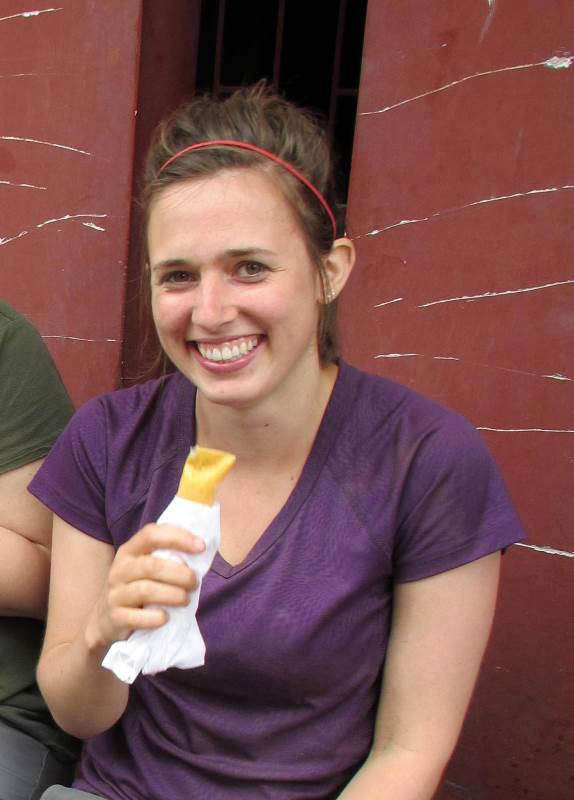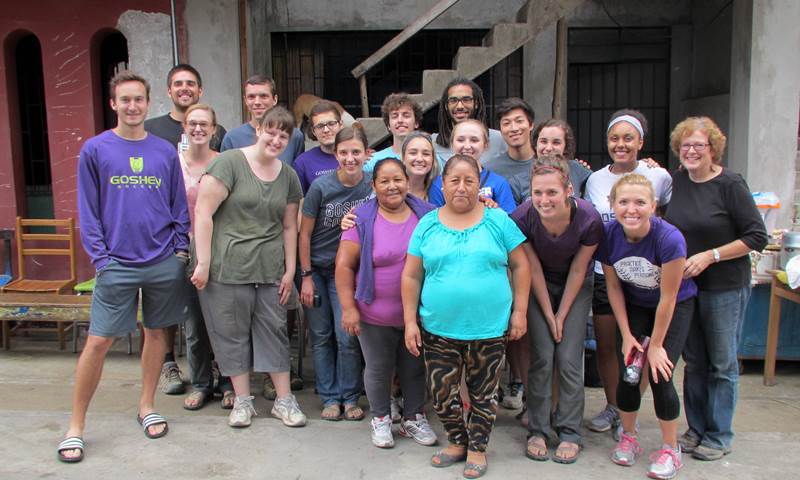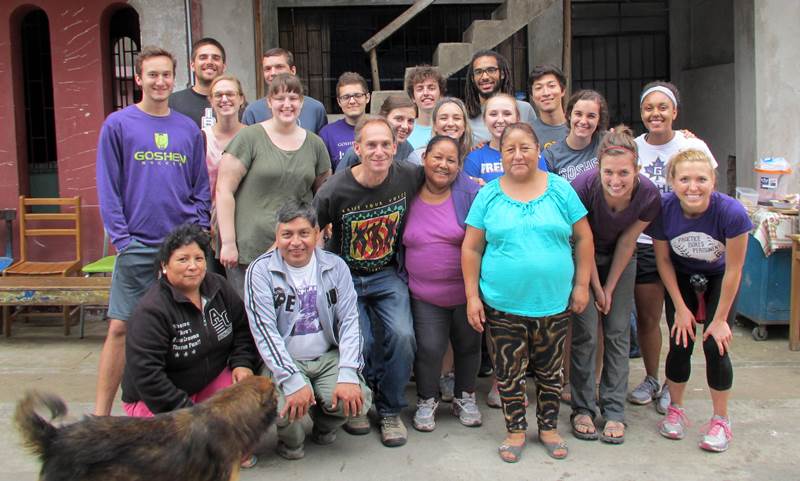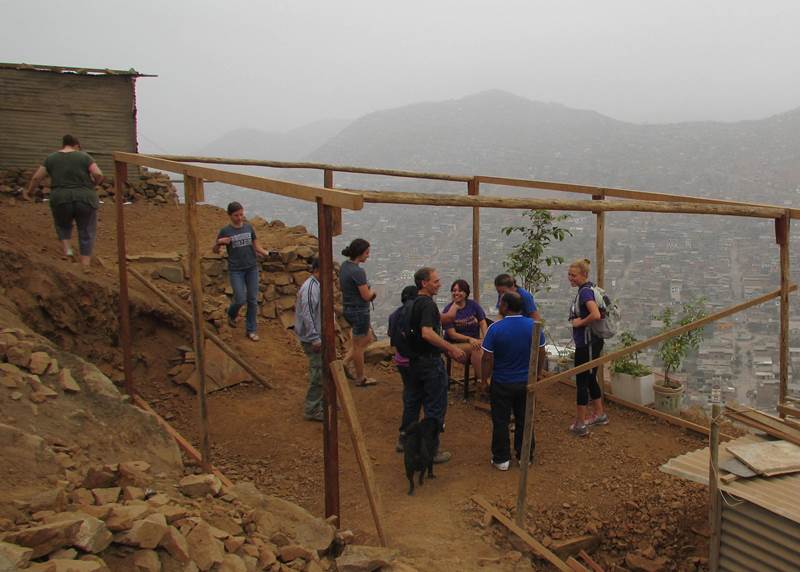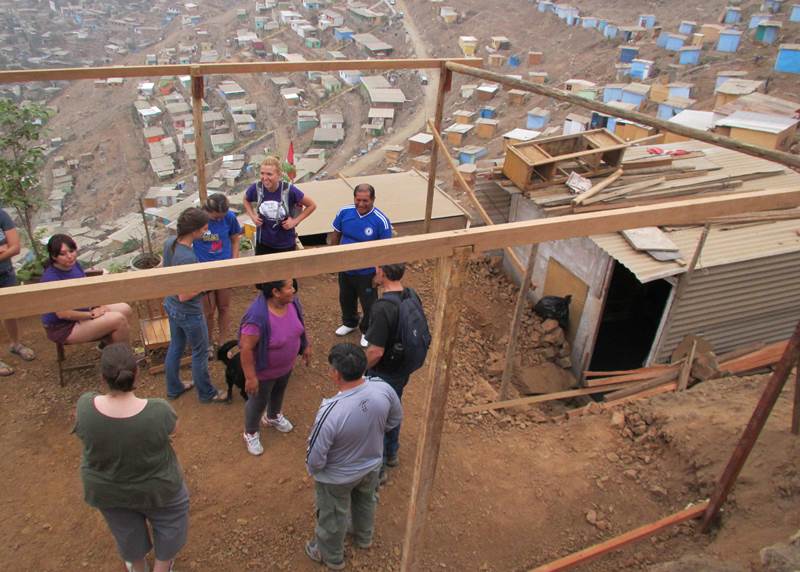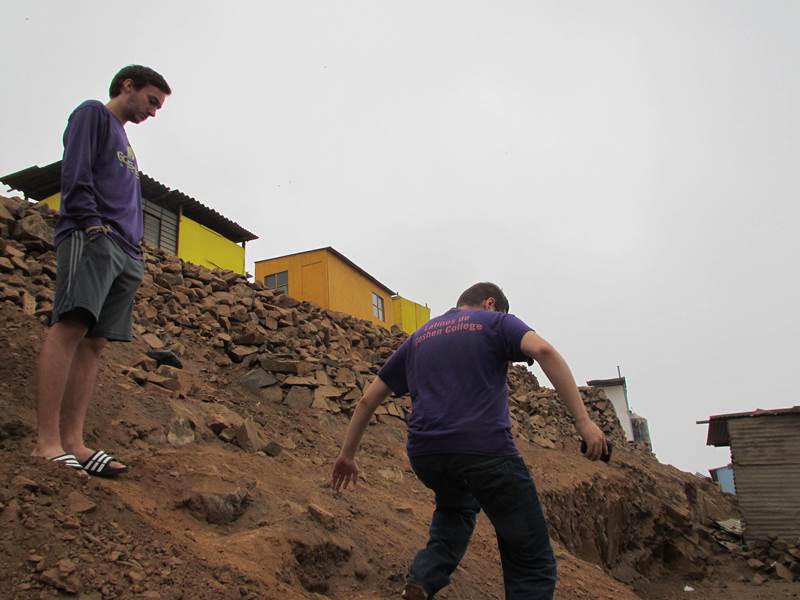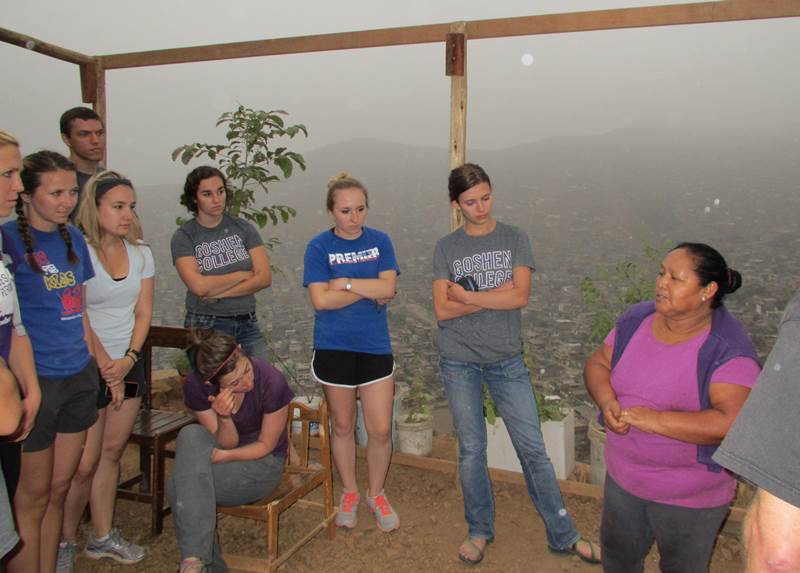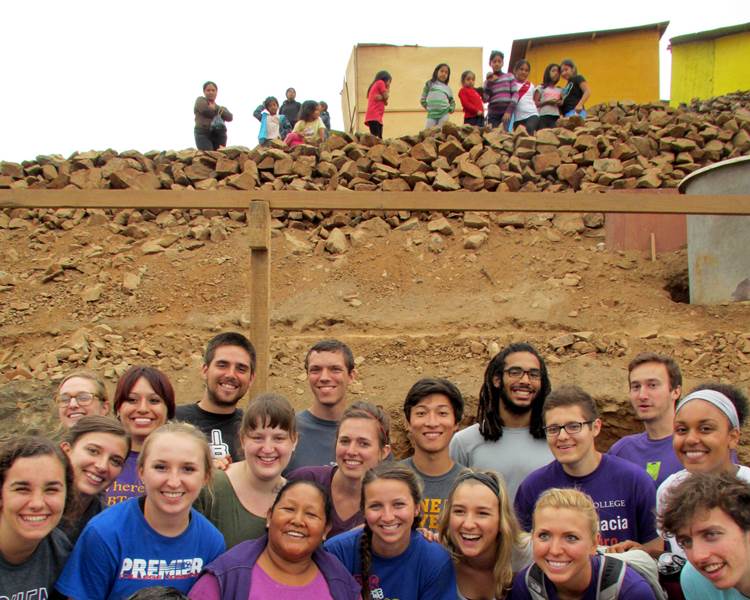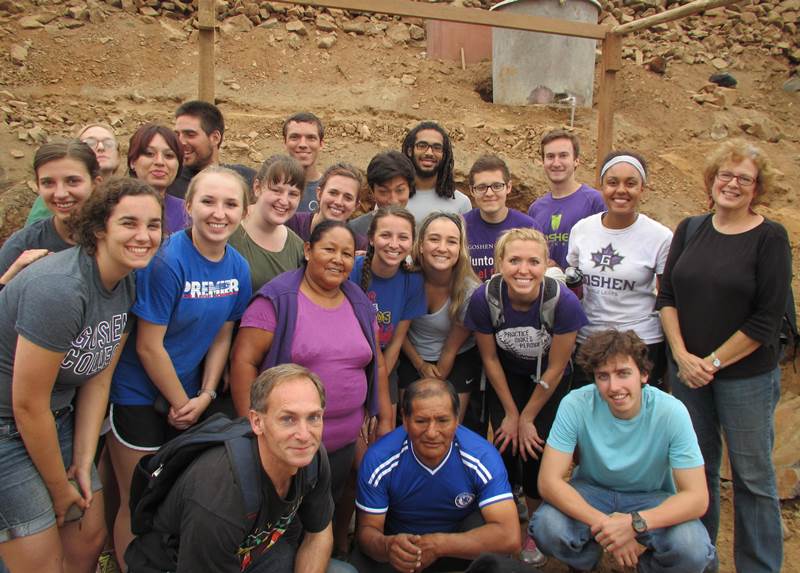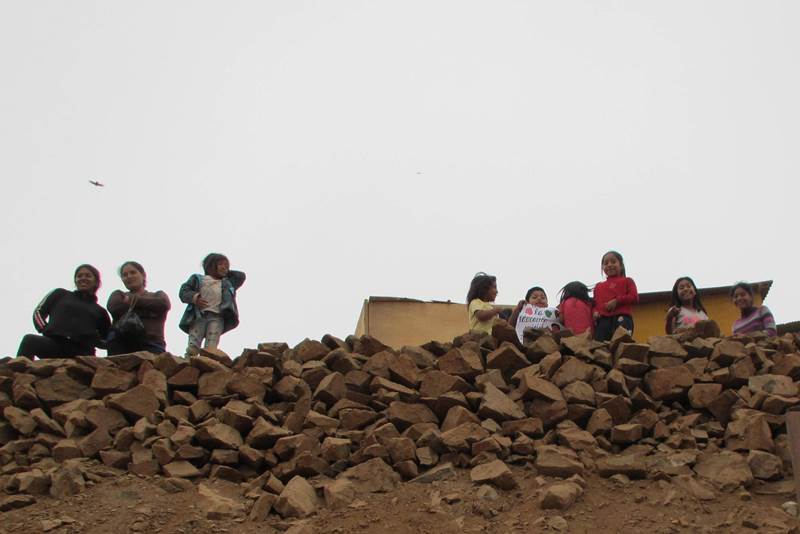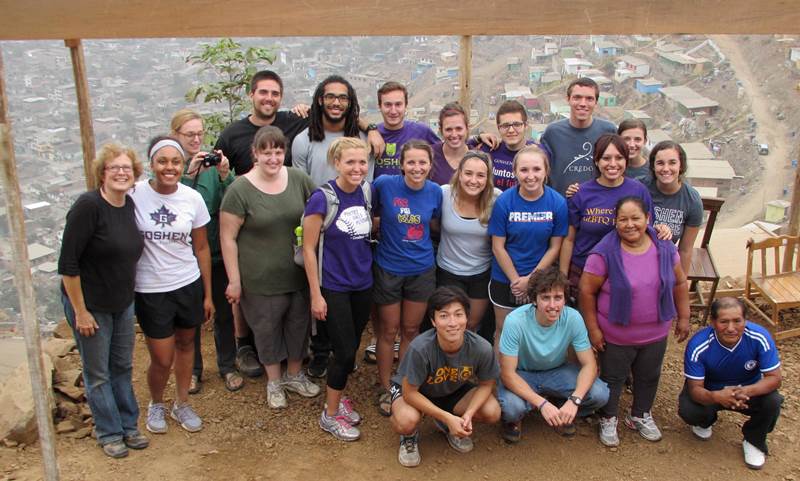Teaming Up With the Master Gardener of Cono Sur
By Karen and Duane Sherer Stoltzfus
Peru SST Co-Directors, 2014-2015
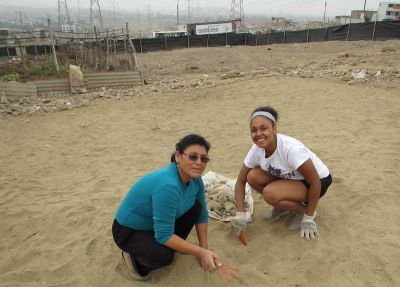
As Goshen College students do at least once every semester in Peru, we drove about an hour south to contribute to the greening of the “Southern Cone” of Lima in the districts of San Juan de Miraflores and Villa Maria del Triunfo.
In the fall and in the spring, we expanded gardens that were already under way, preparing for new plots adjacent to beds of lettuce, carrots, potatoes, celery, broccoli, peppers. This time we were invited to join with 20 or so families who are beginning an entire garden from scratch. Our service coordinator, Willy Villavicencio, joined us en route.
As we approached the new garden site, called Fortaleza de Kuelap, we were reminded of how desperate the ground can look in San Juan, where poverty is the rule, where the streets too often appear to serve as garbage collectors, where dogs on the loose are a roadway hazard.
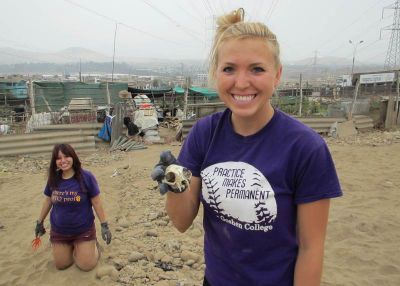
If anyone can make a garden grow here, it is Gregoria Flores, or Señora Gregoria, as she is known, the master gardener of Cono Sur. She met us on a hillside of sand and stones, directly underneath strands of heavy-duty power lines. A section of this coastal desert ground had been walled off, using posts and plastic tarp.
She led us inside the compound to meet the family members who came, with a trowel or other small handheld tool. They introduced themselves, telling us their names (Eliana, Juan, Maria, Juliana and their colleagues) and where they were from. Nearly everyone named a place outside of Lima (regions like Ayacucho, Amazonas, Apurimac, and Huancavelica). The president of the gardening association is Maria Doraliza Chavez, who was born in the Amazonas.
This southern cone of Lima has been fed for decades by immigrants from the Andes and the jungle. In the 1980s and 1990s they fled the armed conflict begun by the Shining Path in Ayacucho. Even before that, settlers came to Lima for the promise of a better job — or just a job — and education.
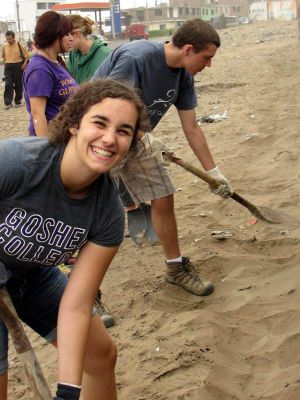
Once here they had to contend with urban poverty and its fallout: crime and drug use and gang activity. “This was a place where you couldn’t go out at the night,” Señora Gregoria said.
Many residents in this Southern Cone struggle with underemployment, poverty and malnutrition. By some estimates, one-third of the residents lack electrical service and more than one-fifth lack running water.
Community organizing, like this garden, pushes back against that dark chaos. It promises people wholesome fresh food and a source of income, since they sell extra goods in the market. Beyond that, it provides a sense of hope (there’s new scientific evidence about the power of hope in lifting people out of poverty — see “The Power of Hope Is Real”).
Señora Gregoria announced that it was time to get to work. For the next two hours, students shored up the plastic perimeter walls in order to keep dogs out of the garden area. Then they went off, like early round picks, two by two, to help family members clear rocks from their parcels.
Midway through the work, Maria Doraliza came with a heavy jug of freshly made maracuyá juice, which she shared all around. Before we left, she returned, bearing another jug of juice. Other gardeners brought around bottles of water and encouraged student gardeners to drink. Group photos were taken before we left, with promises that Goshen would return in January (Lima’s summer) to share prints, and admire the fruits of their labor.
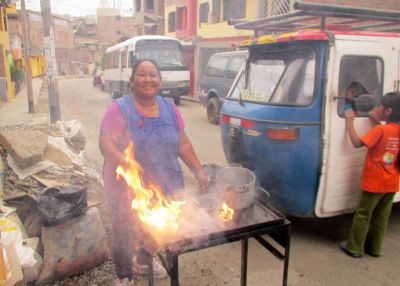
Alicia Taipe Tello, a longtime member of the Peruvian SST staff, prepares lunch for us twice a week at the Anglican church where we meet for classes and lectures. This time, we had the privilege of eating at her home, in nearby Villa Maria del Triunfo.
As our bus approached, Alicia was busy grilling anticuchos (skewers of marinated beef heart and chicken breast), which we enjoyed with potatoes, aji salsa, and corn on the cob. For dessert we sampled homemade fruit pops known as marcianos (some were made with maracuyá that we brought back from our Caral trip).
After lunch Alicia invited us to visit a home that she and her husband, Oswaldo, are building for their son, Richard, and his family. The first step is claiming a piece of land on a hillside on the outskirts of Villa Maria, known as 12 de Junio. About four months ago they marked out a section of the hill, maybe 20 by 20. They leveled the land and put up a single room with a covered porch. Another son, Raul, has a house in the making nearby.
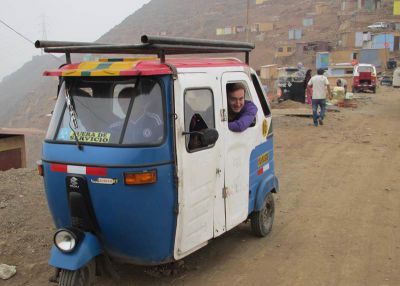
Through occupying the land, they hope eventually to have a legal claim on what was once vacant land, as many tens of thousands of Peruvians have done over the decades. The process is called an “invasion.” Alicia and Oswaldo are among dozens of families that have staked out a claim on this hillside, for now out of reach of electricity and running water.
“It’s a humble home,” she said. But they look forward to investing sweat equity and eventually being hooked up to the grid. And then there’s the commanding view of Villa Maria — one can imagine being able to see all the way to the Pacific. “It’s a wonderful place for a home,” she said.
